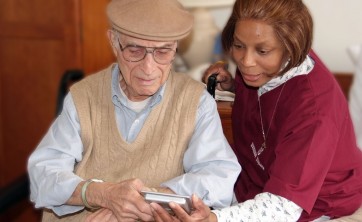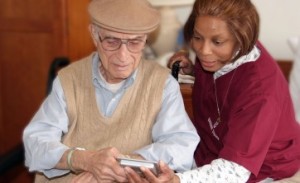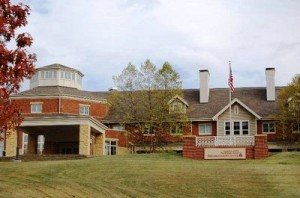
The decision to move to a skilled nursing or rehabilitation facility can be difficult for both resident and family. Assuring a smooth transition from home or hospital is essential to putting the individual, spouse and family at ease and creating a positive experience. That’s been our central focus for Charles Morris Skilled Nursing and Rehabilitation Center. A 159-bed facility, CMNRC is part of the Pittsburgh Jewish Association on Aging (JAA)’s comprehensive network of skilled residential and non-residential services for the elderly. We continually strive to meet the physical, emotional and social needs of patients and residents, and the Patient and Family Centered Care Methodology and Practice has provided us with a clearly defined six-step path to improvement.
1: Defining the Care Experience for Improvement
In early 2013, we initiated the Patient and Family Centered Care Methodology and Practice (PFCC M/P) at the Charles Morris Nursing and Rehabilitation Center (CMNRC), with a focus on improving the experience for our residents and their loved ones. Specifically, we focused on the Day of Admission — from the time a decision is made to transfer to CMNRC through the end of the first day of admission. We are the first long-term care facility to implement the PFCC M/P. Our services are significantly different than those in either outpatient or acute care settings in that we care for our residents much longer (from days to year) and 24/7. We wanted to keep our focus narrow to be sure we achieve results and to understand how the PFCC M/P works in a long-term care setting.
2: Creating The PFCC Guiding Council
Our PFCC Guiding Council consists of:
- Administrative Champion: JAA President & CEO
- Clinical Champions: JAA Care Navigator and UPMC Magee-Womens Hospital Director of Social Work
- PFCC Coordinator: Administrator, Charles Morris Nursing & Rehab Center
3: Defining the Current State through Shadowing
 Shadowing of the Day of Admission showed several opportunities for improvement. These includedimproving communication between referring hospital, ambulance personnel and our staff. Specifically,we wanted to improve communication about the time of transfer, each resident’s clinical and mental status. We also wanted to address shift change challenges in addition to enhancing and personalizing the welcome and orientation for resident and family, and improving the aesthetics in one of the building entrances.
Shadowing of the Day of Admission showed several opportunities for improvement. These includedimproving communication between referring hospital, ambulance personnel and our staff. Specifically,we wanted to improve communication about the time of transfer, each resident’s clinical and mental status. We also wanted to address shift change challenges in addition to enhancing and personalizing the welcome and orientation for resident and family, and improving the aesthetics in one of the building entrances.
4: Expanding the PFCC Guiding Council into a Working Group
PFCC Working Groups are comprised of all those who impact the patient and family experience, either directly or indirectly. Our PFCC Working Group includes the PFCC Guiding Council members along with staff representing nursing, social work, dietary, activities, admissions, therapy, security and administration.
5: Creating a Shared Vision by Writing the Ideal Story
The PFCC Working Group translated their vision of the Day of Admission into an ideal care story which was based on Shadowing observations. The ideal story was written in first person from the patient and family point of view and covered the time from initial decision to transfer to CMNRC through the end of the first day. Though too long to include here (please don’t hesitate to contact us if you would like a copy), other PFCC Working Groups are being encouraged to use the same format which is written as if “in real-time,” following the residents’ and families’ journey for this segment of the care experience.
6: Creating PFCC Projects and Project Teams
Our current PFCC projects are focused on closing the gaps between the current state identified through Shadowing and the ideal state. They include:
- Care Concierge Service: Each new resident will be visited in the hospital before transfer by a member of the CMNRC Care Concierge Services. This visit will provide the resident and family an opportunity to ask questions and ease their transition by providing a familiar face and a contact person once the transfer occurs.
- New Admission Notification and Escort: On arrival to CMNRC, the new resident will be greeted and escorted to their room by CMNRC Security. The front desk will call both the Admissions Office and the Nursing Supervisor to notify them that the resident as arrived. CMNRC will stay with the resident in his or her room until a nursing staff member arrives in the room.
- Welcome Bag: This bag contains items that might be needed during the residents’ stay: note pad, pen, magnifying glass, and ID card holder.
- Guardian Angel Program: A staff member will be assigned to assist each new resident (and family) with questions and concerns and will visit the new resident within 48 hours of admission.
- Phone Number and Channel Listing Card: Each room at CMNRC has a laminated card with pertinent phone numbers (CMNRC staff, the kitchen, the Physical Therapy gym, etc.) as well as a TV Channel listing.
- Entrance Rejuvenation: A fresh coat of paint and new light fixtures are being added to brighten a once-dark hallway and artwork is being hung on the walls to create a warm, home-like experience for everyone who travels that hallway.
The PFCC Working Group at CMNRC looks forward to continuing to identify and address opportunities to improve the experience of care for residents and their families – many of which have an impact on clinical outcomes as well.
For more information about the PFCC Methodology and Practice, please feel free to contact Patty Embree at embreepl@upmc.edu or Pamela Greenhouse at greenhousepk@upmc.edu.





